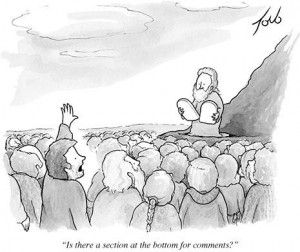“Without vision, the people will perish.”
– Book of Proverbs
“Problem solving becomes the busywork of organizations in which people have forgotten their purpose and vision.”
– Peter Senge, author of The Fifth Discipline
What is vision?
 Vision describes and makes explicit a desired future. Vision is a tool to help foster an environment of shared meaning where the future scenario is revealed and defined so that everyone can take an active part in leading toward it. Effective vision highlights the creative tension between current reality and what is possible and preferable as the coming years.
Vision describes and makes explicit a desired future. Vision is a tool to help foster an environment of shared meaning where the future scenario is revealed and defined so that everyone can take an active part in leading toward it. Effective vision highlights the creative tension between current reality and what is possible and preferable as the coming years.
Unlike a mission statement, vision is more about “what” – what’s possible and would be worth manifesting? Mission statements tend to address the “why” aspect – “Why are we in business? Why do we exist?” Organizations and individuals often implement both mission and vision, then ask “What do we want?” (goals), “How will get there?” (strategy) and “What factors are critical to our success?” (critical success factors, guiding values and principles, key metrics or measures, indicators or strategic imperatives).
Who participates? What is shared vision?
 Executive management benefits from inviting collaboration in order to define “shared vision” on behalf of the entire Company. Depending on the size of the Company and current situation, the company’s founder(s) or executive leadership may also proscribe a vision for the other stakeholders.
Executive management benefits from inviting collaboration in order to define “shared vision” on behalf of the entire Company. Depending on the size of the Company and current situation, the company’s founder(s) or executive leadership may also proscribe a vision for the other stakeholders.
But when a company’s culture is built on the sense that “we’re all in this together” and diversity and individuals truly matter, better results come from including and involving key stakeholders in the vision-making process. This ensures a more robust, truly shared vision as well as a sincere commitment to using it.
Risks and Benefits
Unlike a goal, vision is not necessarily bound by time. At first, this may lead to “anything goes” thinking, in absurd contrast with present reality. The risk is that a vision may seem impractically far reaching, even grandiose.
Ideally, a vision is reasonably long term, compelling to some degree (perhaps even exciting), and the team feels capable of manifesting it. When vision seems achievable, even though it may represent a “healthy stretch” toward a desired future state, it helps uplift and inform closer-at-hand goals while inspiring and aligning teamwork.
Vision-making work can serve the leaders and other stakeholders of the company in carrying out their leadership role, unifying your efforts and building common ground and loyalty among employees.
The results of all vision-making activities would be captured in one or more vision statements and used to guide decision making as well as assist with new employee orientation, recruitment, and possibly aspects of public relations. Similar to goals, vision helps guide local actions and choices.
Vision statements can be either internal or external or both. Most often they are created for the company’s management and staff to gain shared meaning. A separate or related statement can be prepared for the general public, suppliers, customers, etc.
Unintentionally, effective vision often reveals training gaps or other areas that are more intimidating than motivating. In this sense, vision-making work can clarify long-standing issues, suggest needed changes, or serve as a catalyst for gaining new capabilities or setting new, developmental goals.
How can Daniel Robin & Associates help?
 We have led countless visioning sessions with businesses, not-for-profit organizations, government agencies and educational institutions. We initially consult with the principals, assist with preparation, then facilitate one or more group sessions aimed at developing a clear and compelling vision with the designated stakeholders. Senior staff would employ a combination of group facilitation, discussion, and brief presentation (to introduce tools and techniques) in support of this vision-making effort.
We have led countless visioning sessions with businesses, not-for-profit organizations, government agencies and educational institutions. We initially consult with the principals, assist with preparation, then facilitate one or more group sessions aimed at developing a clear and compelling vision with the designated stakeholders. Senior staff would employ a combination of group facilitation, discussion, and brief presentation (to introduce tools and techniques) in support of this vision-making effort.
Roughly 98% of the talking and 100% of the vision’s content would come from the participants. A facilitator would capture the differences and similarities, help with any stuck points, and guide the group toward crafting, validating and owning a clear and compelling vision statement.
Style of Facilitation
The group facilitation would provide an interactive forum to explore ideas, gain from other people’s perspective, and build toward consensus. To the extent possible, facilitation will directly reflect practical, real work situations, acknowledging current conditions while eliciting ideas for desired future scenarios.
We use a lighthearted, crisp and respectful style to help stakeholders imagine and convey their hopes and aspirations for the future, with a slight bias toward practicality, ensuring that the resulting vision is immediately applicable. The facilitator’s style and demeanor helps all participants feel safe enough to take risks with open and honest communication, putting aside concerns about conformism or idealism, and supporting a positive, creative, and optimistic view of the future.
Getting Started
There is no “one size fits all” approach to developing shared vision, but certainly there are success principles and best practices. The number of participants, preparation steps, time you spend together, process steps, resulting vision statement (or other key outcomes), as well as how it all translates back to daily operations is entirely up to you. These choices depend on the real goal or purpose.
An effective way to begin a vision process is to conduct individual interviews with a set of stakeholders roughly 2-4 weeks before a planned visioning session. These candid conversations help surface themes and issues that would influence the group’s vision work. Interviews are particularly important when key stakeholders have been unable to effectively communicate long-standing issues in the due course of work. Interviews typically last 15-20 minutes per individual, and a neutral third party could be asked to summarizing and deliver findings to the principals for discussion.
To prepare participants for a visioning session, develop a set of powerful questions that will be used to guide participants. Send out an invitation a week in advance that clarifies intentions and sets groundrules, putting forward the session agenda, questions that will be used, and plans for follow-up. It is important that administrative details get handled well in advance so participants can focus on the important work of constructing the desired future.


